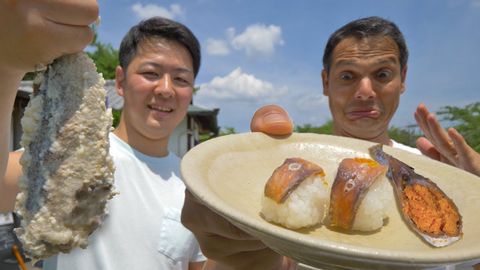臭壽司飲食挑戰。一年一桶 ★只在日本進行 (Stinky Sushi Eating Challenge: One Year in a Bucket ★ ONLY in JAPAN)
Summer 發佈於 2020 年 10 月 24 日  沒有此條件下的單字
沒有此條件下的單字US /ˈenʃənt/
・
UK /'eɪnʃənt/
US /bækˈtɪriə/
・
UK /bæk'tɪərɪə/
US /ˈfitʃɚ/
・
UK /'fi:tʃə(r)/
- n. (c./u.)特別報導;專欄;特徵;特點;面部特徵;電影長片
- v.t.由...主演;以...為特色
- adj.主要的;重要的
- adj.不尋常的,怪異的
- n.怪物;奇物;怪人;另類;怪人;狂熱者;怪異的事故
- v.i.變得怪異
- v.t.使…變得怪異
